
Arnulf of Carinthia was the duke of Carinthia who overthrew his uncle Emperor Charles the Fat to become the Carolingian king of East Francia from 887, the disputed king of Italy from 894 and the disputed emperor from February 22, 896, until his death at Regensburg, Bavaria.
The 870s decade ran from January 1, 870, to December 31, 879.
The 880s decade ran from January 1, 880, to December 31, 889.
The 890s decade ran from January 1, 890, to December 31, 899.
The 960s decade ran from January 1, 960, to December 31, 969.

Year 899 (DCCCXCIX) was a common year starting on Monday of the Julian calendar.

Year 870 (DCCCLXX) was a common year starting on Sunday of the Julian calendar, the 870th year of the Common Era (CE) and Anno Domini (AD) designations, the 870th year of the 1st millennium, the 70th year of the 9th century, and the 1st year of the 870s decade.
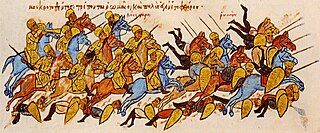
Year 896 (DCCCXCVI) was a leap year starting on Thursday of the Julian calendar.

Year 895 (DCCCXCV) was a common year starting on Wednesday of the Julian calendar.
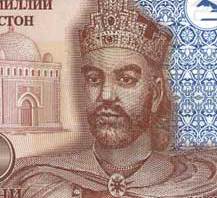
Year 892 (DCCCXCII) was a leap year starting on Saturday of the Julian calendar, the 892nd year of the Common Era (CE) and Anno Domini (AD) designations, the 892nd year of the 1st millennium, the 92nd year of the 9th century, and the 3rd year of the 890s decade.
Year 893 (DCCCXCIII) was a common year starting on Monday of the Julian calendar.

Year 889 (DCCCLXXXIX) was a common year starting on Wednesday of the Julian calendar.

Year 883 (DCCCLXXXIII) was a common year starting on Tuesday of the Julian calendar.

Year 888 (DCCCLXXXVIII) was a leap year starting on Monday of the Julian calendar.
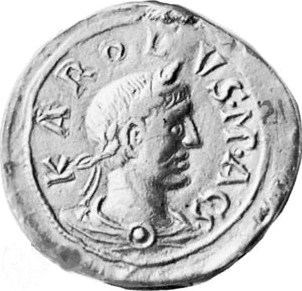
Charles III, also known as Charles the Fat, was the emperor of the Carolingian Empire from 881 to 888. A member of the Carolingian dynasty, Charles was the youngest son of Louis the German and Hemma, and a great-grandson of Charlemagne. He was the last Carolingian emperor of legitimate birth and the last to rule a united kingdom of the Franks.

King of Italy was the title given to the ruler of the Kingdom of Italy after the fall of the Western Roman Empire. The first to take the title was Odoacer, a barbarian military leader, in the late 5th century, followed by the Ostrogothic kings up to the mid-6th century. With the Frankish conquest of Italy in the 8th century, the Carolingians assumed the title, which was maintained by subsequent Holy Roman Emperors throughout the Middle Ages. The last Emperor to claim the title was Charles V in the 16th century. During this period, the holders of the title were crowned with the Iron Crown of Lombardy.

Zwentibold, a member of the Carolingian dynasty, was the illegitimate son of Emperor Arnulf. In 895, his father granted him the Kingdom of Lotharingia, which he ruled until his death.

Lambert was the King of Italy from 891, Holy Roman Emperor, co-ruling with his father from 892, and Duke of Spoleto and Camerino from his father's death in 894. He was the son of Guy III of Spoleto and Ageltrude, born in San Rufino. He was the last ruler to issue a capitulary in the Carolingian tradition.
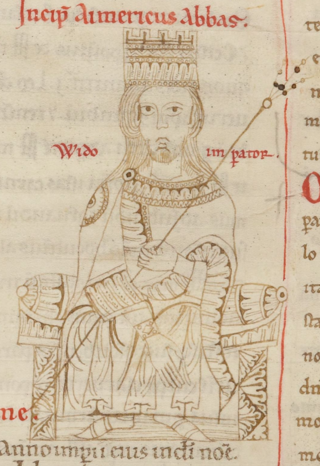
Guy III of Spoleto was the margrave of Camerino from 880 and then duke of Spoleto and Camerino from 883. He was crowned king of Italy in 889 and emperor in 891. He died in 894 while fighting for control of the Italian Peninsula.
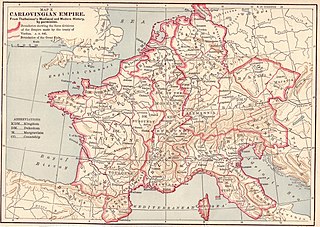
The March of Friuli was a Carolingian frontier march, established in 776 as the continuation of the Lombard Duchy of Friuli, established against the Slavs and Avars. It was ceded to the Duchy of Bavaria as the March of Verona in 952. Its territory comprised parts of modern-day Italy, Slovenia and Croatia.















